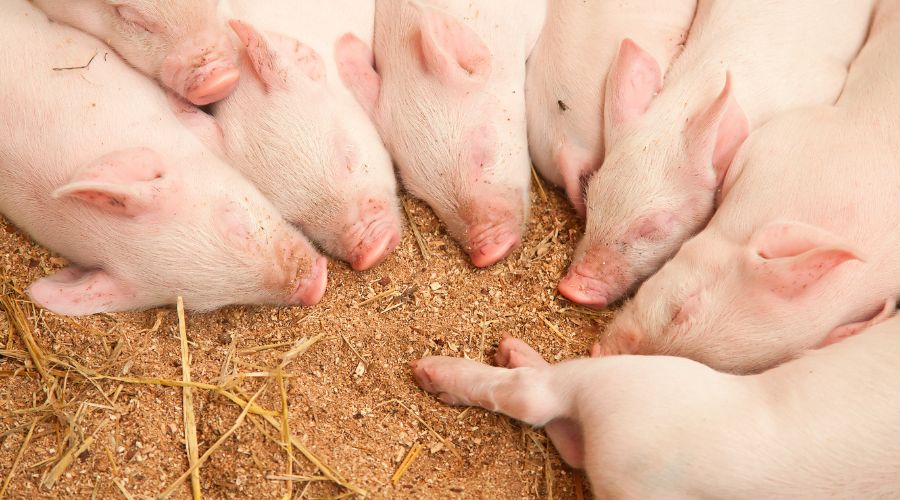Avoiding common mistakes in pig farming can save time, money, and effort. By addressing these pitfalls, you can set your farm up for long-term success. Let’s dive into some of the most frequent errors and how to prevent them.
1. Neglecting Proper Planning
Starting a pig farm without a clear plan is a recipe for trouble. Planning ensures you allocate resources wisely and meet your farm’s goals.
How to avoid this mistake:
- Draft a detailed business plan outlining costs, income projections, and market strategies.
- Research your target market to understand demand and pricing.
- Calculate the number of pigs you can realistically raise based on available space and budget.
Proper planning helps you avoid unexpected expenses and production bottlenecks.
2. Choosing the Wrong Breed
Not all pig breeds suit every farming goal or environment. Selecting an unsuitable breed can result in poor growth and low productivity.
How to avoid this mistake:
- Identify your primary goal: meat production, breeding, or both.
- Consult with local farmers or veterinarians to determine breeds suited to your region.
- Choose healthy piglets from reputable suppliers to ensure good genetics.
Selecting the right breed increases efficiency and aligns your farm’s operations with market needs.
3. Overcrowding Pens
Overcrowding stresses pigs, leading to health issues and slower growth. It also raises the risk of disease outbreaks.
How to avoid this mistake:
- Provide at least 8-10 square feet per pig, depending on their size and breed [TO BE VERIFIED].
- Monitor pen conditions and adjust stocking density as pigs grow.
- Regularly clean pens to maintain hygiene.
Ensuring sufficient space promotes better health and improves overall productivity.
4. Skipping Vaccinations
Unvaccinated pigs are vulnerable to diseases that can devastate your herd. This mistake often results from neglect or cost-cutting.
How to avoid this mistake:
- Consult with a veterinarian to develop a vaccination schedule.
- Keep detailed records of all administered vaccines.
- Monitor for updates on disease outbreaks in your area.
Vaccinations are a cost-effective way to safeguard your investment and ensure consistent growth.
5. Poor Waste Management
Improper waste management creates unsanitary conditions that harm pigs and the environment. It also affects neighboring communities.
How to avoid this mistake:
- Install a waste disposal system that separates solid and liquid waste.
- Clean pens daily to prevent odor and pest infestations.
- Recycle manure into organic fertilizer to reduce waste and cut costs.
A clean environment supports healthy pigs and fosters better community relations.
6. Inadequate Feeding Practices
Feeding pigs improperly—whether too much, too little, or low-quality feed—slows growth and raises costs. Balanced nutrition is essential.
How to avoid this mistake:
- Provide age-appropriate feed that meets nutritional requirements.
- Use feeding charts to calculate daily rations accurately.
- Regularly check feed quality and avoid contaminated or expired products.
Efficient feeding reduces waste and ensures healthy weight gain.
7. Ignoring Biosecurity Measures
Lax biosecurity measures expose your farm to external disease threats. Visitors, equipment, and new animals can introduce infections.
How to avoid this mistake:
- Limit farm access to essential personnel and disinfect footwear and equipment.
- Quarantine new pigs for at least two weeks before introducing them to the herd.
- Regularly inspect fences to prevent wild animals from entering.
Strict biosecurity protects your herd from costly disease outbreaks.
8. Overlooking Water Quality
Clean water is as crucial as feed. Poor water quality can lead to dehydration, reduced feed intake, and health problems.
How to avoid this mistake:
- Test water sources regularly for contaminants like bacteria and nitrates.
- Use automated waterers to ensure consistent supply and prevent contamination.
- Monitor water consumption daily to identify issues early.
Access to clean water keeps pigs hydrated and supports optimal growth.
9. Failing to Monitor Health
Early signs of illness often go unnoticed, leading to widespread disease and higher mortality rates. Regular monitoring prevents this.
How to avoid this mistake:
- Observe pigs daily for changes in behavior, appetite, or appearance.
- Keep detailed health records for each pig.
- Isolate sick pigs immediately and consult a veterinarian.
Prompt action minimizes losses and maintains herd productivity.
10. Neglecting Employee Training
Untrained employees may mishandle pigs, waste resources, or overlook important tasks. This affects farm efficiency.
How to avoid this mistake:
- Provide regular training on feeding, cleaning, and health monitoring.
- Use written protocols for consistency in daily operations.
- Encourage employees to report issues and share feedback.
A skilled workforce ensures smoother operations and better results.
By addressing these common mistakes, you can avoid unnecessary losses and create a thriving pig farming operation. Staying vigilant and proactive makes all the difference.


